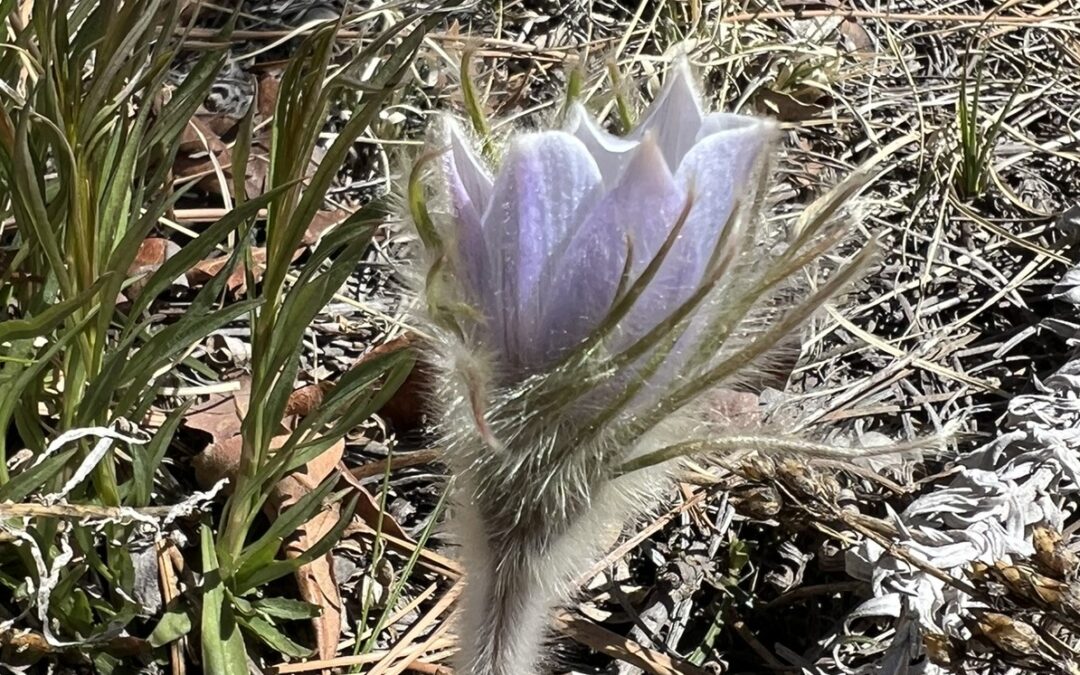By Sharon Sjostrom
It was just a few days past Easter and the bright sun was rapidly melting the snow that fell overnight. What a perfect time to search for another spring friend, the pasqueflower or Easter flower. This plant is also known as wild crocus, prairie crocus or Pulsatilla nuttalliana ssp. multifida.
This one loves to bloom in soils moist from melting snows. You’ll recognize her from the insulating coat of hairs on her stem and sepals that keep the snow away. The sepals look like violet to lavender petals, but a botanist would tell you that this plant doesn’t have any petals. When the temperature drops or another storm blows in, the sepals will close up to protect the ring of 100 or more stamens with their yellow pollen sacs surrounding the styles in the center. I’ve heard this flower called “eye of spring” because the center of the flower looks like an eye. You may have noticed that I call this flower “she.” I don’t think of these beauties as “it,” but the presence of both pollen sacs and styles with ovaries indicate that we need a better gender-inclusive term in English that isn’t as cumbersome as the botanical term “monoecious.”
I love to see this flower in bloom, both for her beauty and for her evolutionary resourcefulness to survive and bloom when there isn’t much competition for the attention of the pollinators. Each flower will only last a few days and once the soil starts to dry up, her blooming season will be over. After pollination, the sepals will fall away and the styles will mature into what looks like a feathery head of threads, each thread with a seed at its base. The head is above the single collar of thin leaves around the stem. The wind or a passing animal will carry the thread and seed to a new home to grow and bloom in a future year.
If you want to see these beautiful spring friends, you’ll have to get out there soon and risk some mud on your boots.
What: Pasqueflower (Pulsatilla nuttalliana ssp multifida). “Pulsatilla” Latin for “pulsing,” “moving about,” plus the diminutive, “illa” or a little quiver in the wind. “nuttalliana” for 19th century botanist Thomas Nuttall, “Multifida” Latin for “many divisions” of the leaves.
Where: Dawson Butte Open Space. More than 64,000 acres are protected in Douglas County through their Division of Open Space and Natural Resources. The Conservation Easement on Dawson Butte is part of the more than 27,000 acres stewarded by Douglas Land Conservancy. I am very grateful to both of these organizations for protecting open lands in the county and for providing us a place to hike and be with nature.

